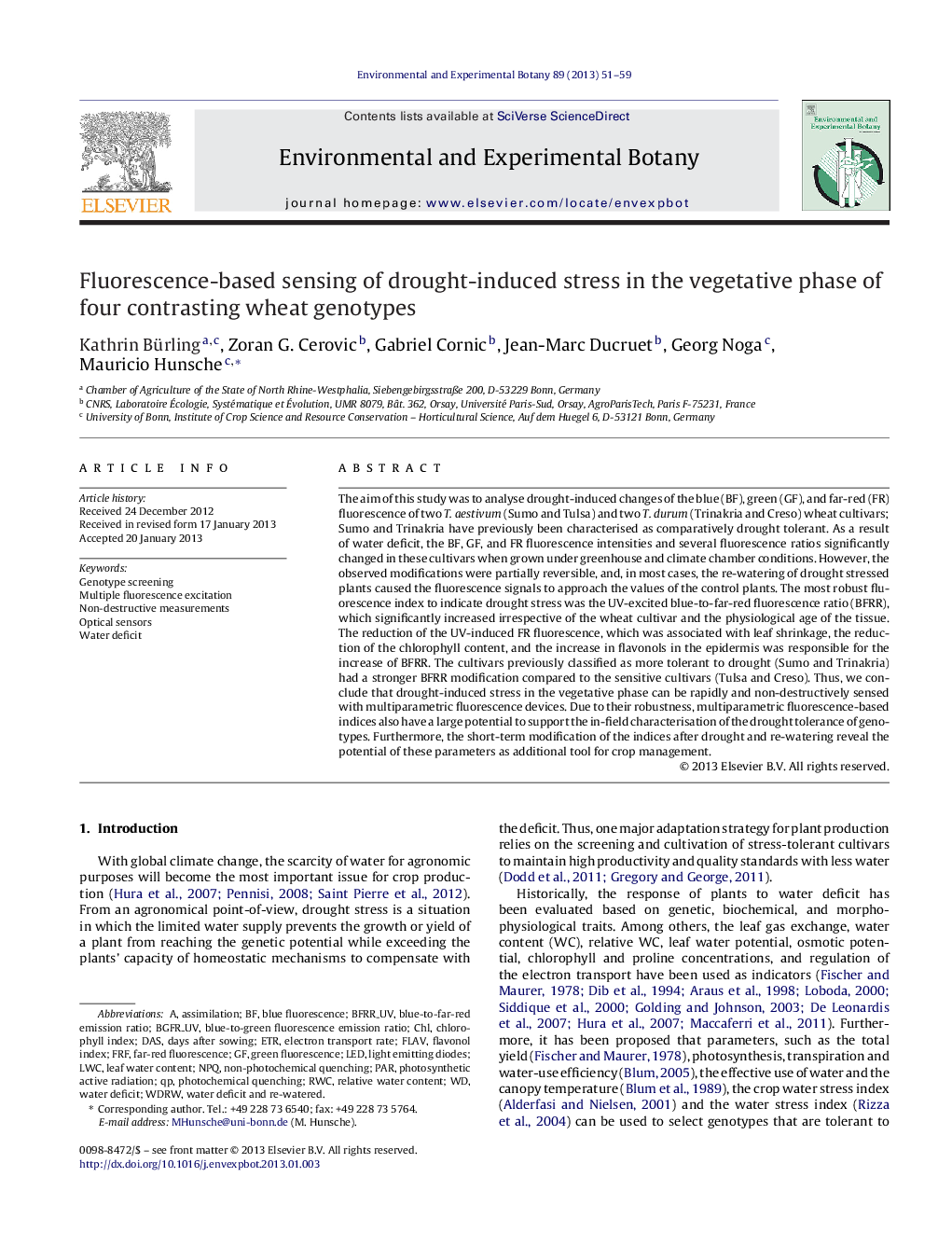| Article ID | Journal | Published Year | Pages | File Type |
|---|---|---|---|---|
| 4554540 | Environmental and Experimental Botany | 2013 | 9 Pages |
The aim of this study was to analyse drought-induced changes of the blue (BF), green (GF), and far-red (FR) fluorescence of two T. aestivum (Sumo and Tulsa) and two T. durum (Trinakria and Creso) wheat cultivars; Sumo and Trinakria have previously been characterised as comparatively drought tolerant. As a result of water deficit, the BF, GF, and FR fluorescence intensities and several fluorescence ratios significantly changed in these cultivars when grown under greenhouse and climate chamber conditions. However, the observed modifications were partially reversible, and, in most cases, the re-watering of drought stressed plants caused the fluorescence signals to approach the values of the control plants. The most robust fluorescence index to indicate drought stress was the UV-excited blue-to-far-red fluorescence ratio (BFRR), which significantly increased irrespective of the wheat cultivar and the physiological age of the tissue. The reduction of the UV-induced FR fluorescence, which was associated with leaf shrinkage, the reduction of the chlorophyll content, and the increase in flavonols in the epidermis was responsible for the increase of BFRR. The cultivars previously classified as more tolerant to drought (Sumo and Trinakria) had a stronger BFRR modification compared to the sensitive cultivars (Tulsa and Creso). Thus, we conclude that drought-induced stress in the vegetative phase can be rapidly and non-destructively sensed with multiparametric fluorescence devices. Due to their robustness, multiparametric fluorescence-based indices also have a large potential to support the in-field characterisation of the drought tolerance of genotypes. Furthermore, the short-term modification of the indices after drought and re-watering reveal the potential of these parameters as additional tool for crop management.
► We analysed the response of Triticum aestivum and Triticum durum genotypes to drought. ► Fluorescence intensity in the blue, green and far-red spectral band was recorded. ► Fluorescence intensities (B, G, and FR) and fluorescence indices were affected by drought. ► The blue-to-far-red ratio was the most robust fluorescence index for drought stress. ► We show the potential of the technique for in-field phenotyping and crop management.
